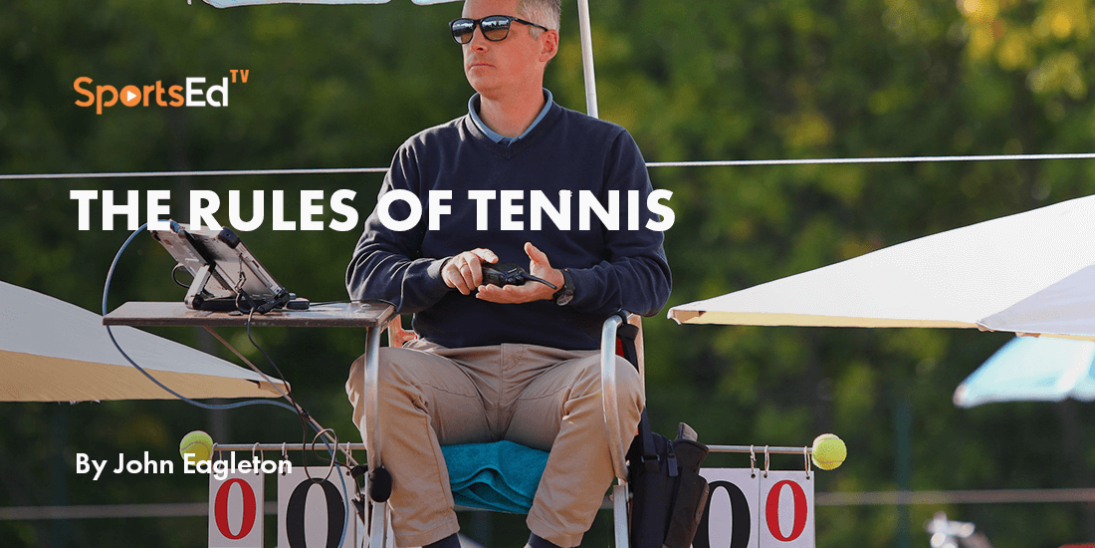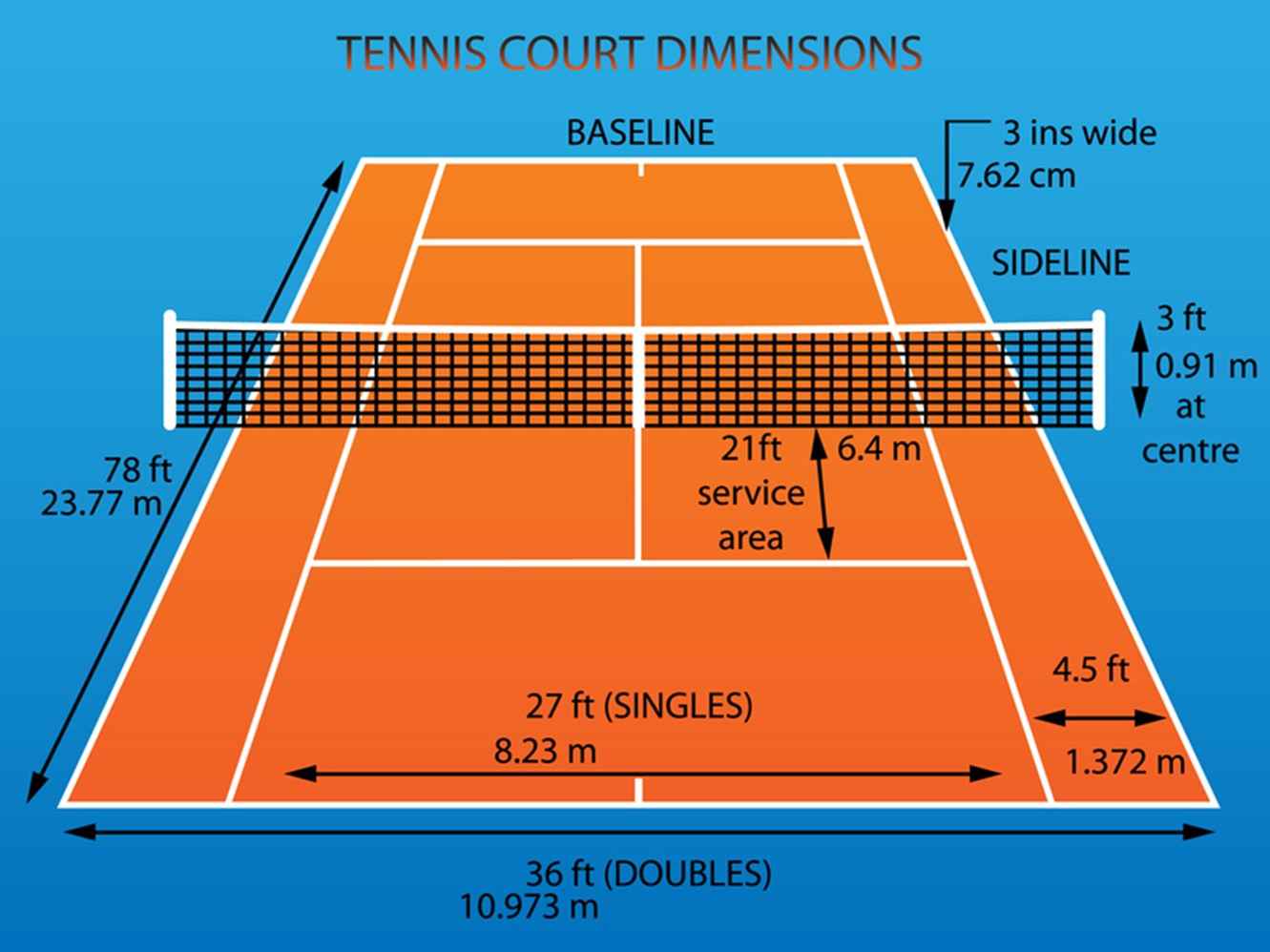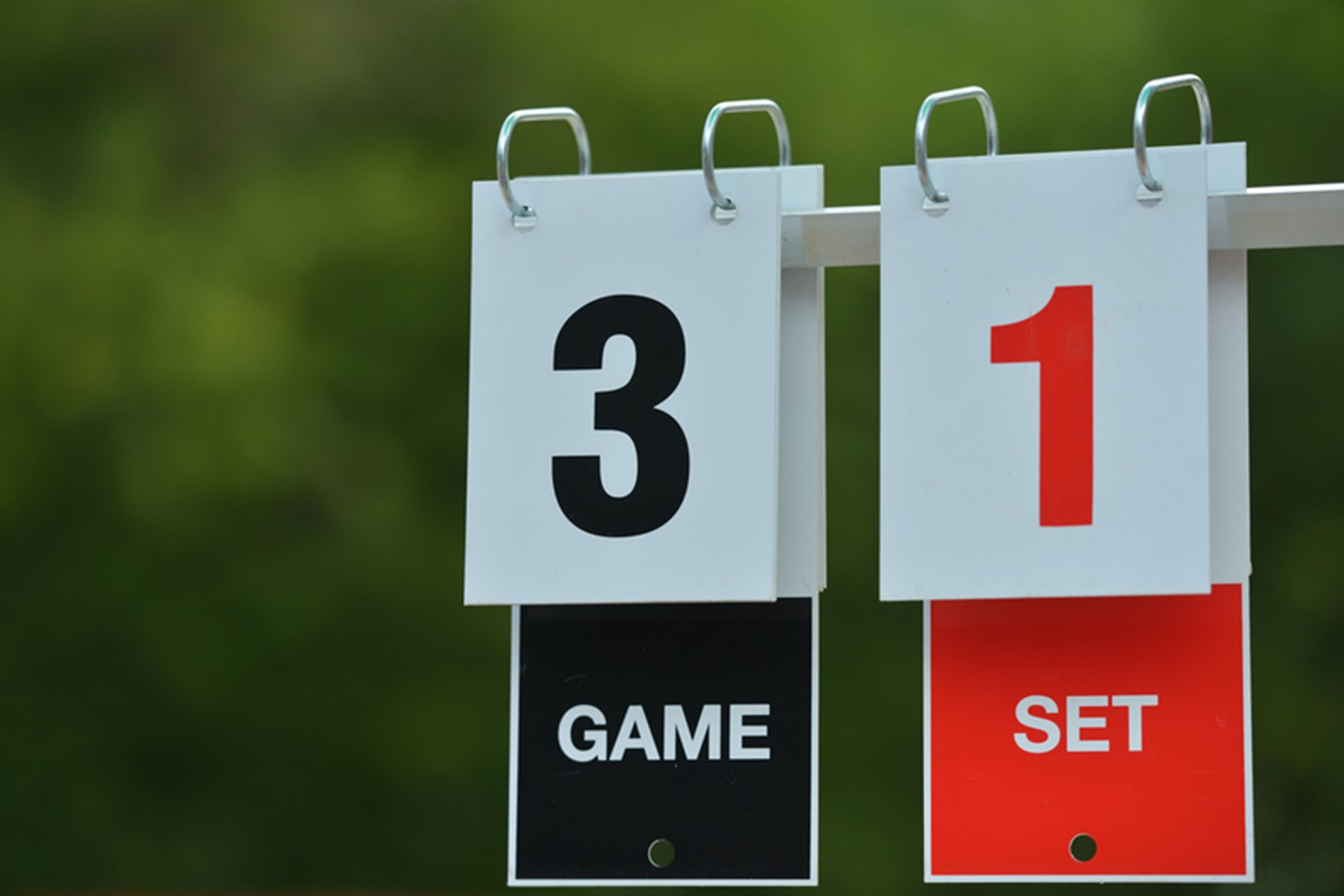Tennis
Welcome and thanks for visiting...

The Rules of Tennis

Make sure to visit our entire tennis video library and register for our free newsletter and membership
Whether you're a beginner or an experienced player, understanding the rules of the game is essential to playing tennis successfully. In this guide, we'll cover the basic rules of tennis, including how to score, how to serve, and how to win a match.
What is Tennis?
Tennis is a popular sport that has been enjoyed by players of all ages and levels of skill for over a century. It is a game that requires a combination of physical, mental, and strategic abilities, and is played on a rectangular court with a variety of surfaces. Two players (singles) or four players (doubles) stand on opposite sides of the net and use a stringed racquet to hit a ball back and forth to each other. The aim is to hit the ball over the net and within the boundaries of the court, and win enough points to win a game, enough games to win a set, and enough sets to win a match. With its unique scoring system, competitive nature, and fast-paced action, tennis is a sport that continues to captivate players and spectators alike.

Gameplay
In tennis, a point starts with a serve, which is initiated by one player situated on the right end side of the center T for the first serve and hits the ball from behind the baseline into the opposite service box on the other side of the net. The opposing player then has the opportunity to return the ball by hitting it back over the net and into the court on the serving player's side. If the serving player's opponent is unable to return the ball, the serving player is awarded a point. If the ball lands out of bounds or hits the net and does not make it over, the serving player loses the point.
Once the serve has been made, players take turns hitting the ball back and forth, with each player or team having a maximum of one bounce to return the ball over the net and within the boundaries of the court. The aim is to outmaneuver and outscore the opponent by hitting the ball in such a way that the opponent is unable to return it or hits it out of bounds or into the net. If the ball hits the line, it is considered in play and the point continues. In tennis, any part of the ball that touches the line is considered to be "in" regardless of whether the rest of the ball is in or out of bounds. This means that even if the ball appears to have landed outside the court if any part of the ball touches the line, it is considered a good shot and the point continues.
The lines on the court are considered to be part of the court, and shots that land on or inside the lines are considered in. This can sometimes lead to close calls and disputes between players, as it can be difficult to determine whether the ball landed inside or outside the lines. In major ATP/WTA tournaments, to help resolve such disputes, players can use the challenge system, which allows them to challenge the umpire's call and review the shot using video technology. Each player is typically given a limited number of challenges (usually 3) per set, and if the challenge is successful, the player retains their challenge. If the challenge is unsuccessful, the player loses their challenge and the original call stands.
In normal plays with no chair umpire, there is a code of honor where both players call their side of the court.
Players use a variety of techniques, including forehands, backhands, serves, overheads, volleys, and other special shots to hit the ball and outmaneuver their opponent. To play tennis, players must use a tennis racquet, which can vary in weight, size, and design, but must meet certain specifications outlined by the International Tennis Federation (ITF). The racquet is typically made of lightweight materials, such as graphite, and has a variety of many different strings.
In wheelchair tennis, players are allowed a maximum of two bounces and can use specially designed wheelchairs that are adapted to the sport. When a player fails to return the ball over the net or within the correct boundaries of the court, the opponent wins a point. Points are earned by hitting the ball in such a way that the opponent is unable to return it, or if the opponent hits the ball out of bounds or into the net.
The aim of tennis is to win enough points to win a game, enough games to win a set, and enough sets to win a match. Let's take a closer look at each of these components.
Starting the Match
Before warming up with your opponent, either player or team will spin their racquet and the winner of the spin will have some options to choose from. They can choose one of these 3 options:
- To serve or receive.
- The side of the court.
- Or defer their choice to their opponent -- but the opponent cannot defer back.
Once the winner of the toss chooses one of the options above, the opponent has the remaining choice.
Tennis Scoring
Tennis has a different point system than most sports. Before we go into detail, here is your guide to scoring a game:
- 0 points = Love
- 1 point = 15
- 2 points = 30
- 3 points = 40
- Tied score = All
- 40-40 = Deuce
- The Server wins deuce point = Ad-In
- The receiver wins deuce point = Ad-Out

If you are the server, you call the score starting with your own points (for instance, 15-40, if you have 15 and your opponent, is at 40).
To win a game, a player must win at least four points. If you are up 40-30, 40-15, or 40-love, and win one more point, you win the game. If the score is tied in a game or set, you use the term “all” when announcing the score. For example, if you and your opponent have both won two points in the game, the score would be 30-all.
The only time this is different is when both you and your opponent have won three points each and the score is 40-40. This is called a deuce. When the score reaches deuce, one player or team will need to win at least two points in a row to win the game. When the server wins the deuce point, it is called Ad-In, but when they lose the deuce point, it is called Ad-Out. If the player with the advantage (Ad-In or Ad-Out) wins another point, he/she wins the game, or it goes back to deuce.
It is critical to call the score after each point. If both players or teams forget the correct score without a chair umpire, they will need to go back to the last score they can both agree upon. There have been many instances where players had to replay a game or even a set.
Switching Ends
Players or teams switch ends of the court on odd games (1,3,5,7, etc.). This means that after the first game is complete, they switch sides, as well as every two games after that.
After one set is completed, players or teams will switch ends and begin the next set. This means that if the players start the first set with one player on the north side of the court and the other on the south side, they will switch sides and start the second set with the opposite player on the north side.
Switching ends at the end of a set is important because it helps to ensure that neither player has an unfair advantage due to wind, sun, or other conditions that may affect play.
Switching sides also allows players to better adapt to different conditions on the court, such as wind or sun, as they will have an opportunity to play on both sides of the court.
Types of Tennis Sets
Now, let’s look at how many games you need to win a set. There are two main ways of scoring a set:
Advantage Set: In an advantage set, a player or team needs to win six games, by two, to win the set. This means that there is no tiebreak game played at 6-6. The set continues until one player/team wins by two games.
Tiebreak Set: In a tiebreak set, a player or team needs to win six games to win the set. If the score gets to 5-5 (5-all), one player must win the next two games to win the set. If the score reaches 6-6 (6-all) in the set, a tiebreak game is played.
Scoring a Tiebreak Game
In a tiebreak game, the next person who was due to serve will start the tiebreak game and serve one point to the deuce side of the court (The server is positioned on the right side of the court). The following point will then be served by the opponent, starting on the ad side (his left side of the court). In doubles, the player on the opposing team due to serve will serve these points.
Players or teams switch ends of the court every six points (e.g., when the score is 4-2), and to score this tiebreak game, you use, “zero", “one”, “two”, “three”, etc. The first player or team to win seven points, by two, wins the tiebreak. This means the score can end up being very high (e.g., 15-13) or as low as 7-0 through 7-5. Whoever wins the tiebreak game wins the set by a score of 7-6.
The reason that there is only one point to start the tiebreak is to offer a level playing field to both players or teams. To win the tiebreak, you need to win at least one point on your opponent’s serve.
Serving After a Tiebreak Set
Since the set is an odd-numbered score (7-6), whichever end of the court the players or teams ended up on when the tiebreak game finished, they will need to switch sides to start the next set. Whoever started serving the tiebreak game will be receiving serve in the first game of the next set.
Winning a Tennis Match
A tennis match can be won by winning a majority of sets played, with each set being played to six games, except in the case of a tiebreak set. A player can win 6-0, 6-1, 6-2, 6-3, 6-4, 7-5, or at 6-6 you will need to play a tiebreaker to win 7-6. Most tournaments play a tiebreaker in the first and second sets. There are some events that will play the final set (the fifth or third one) with no tiebreak game, you will need to go to 8-6, 9-7, etc. to win the set.
The most common format for a tennis match is best of three tiebreak sets, meaning the player who wins two sets wins the match. In the event that each player wins one set each, a third and final set will be played to determine the winner.
In a best-of-three-set match, winning the first set is crucial as it puts pressure on the opponent to win the next two sets in a row. However, if a player loses the first set, they still have a chance to come back and win the match by winning the next two sets. In a best-of-five set match, players must win three sets to win the match, making it an even greater test of endurance and skill.
Grand Slam Matches
As of March of 2022, the four Grand Slams (Roland Garros, Wimbledon, US Open, Australian Open) announced that they transitioned to a consistent, final-set tiebreak format. When a match reaches 6-6 in the deciding set at these events, a 10-point tiebreak will be played. The first player or team to win 10 points, with an advantage of two or more points, will be the winner. Already in use at the Australian Open since 2019, the format began at the other Grand Slam events starting in 2022.
Key questions about tennis rules
What are the rules of serving, and where should my feet be positioned when I serve?
Answer: The rules of serving state that the server must stand behind the baseline and within the imaginary extension of the center mark. The server must also keep both feet behind the baseline until after they have hit the ball. If the server touches the baseline or steps over it before hitting the ball, a foot fault is called, and the server loses the point.
Can I touch the net with my racquet, body, or any other part of my body during a point?
No. If any part of a player's body, clothing, or equipment touches the net or the posts while the ball is still in play, the player loses the point. Good players lean over the net when they are off balance and touch the other side of the court with their racquet without touching the net.
When is a ball considered to be out of bounds, and what happens if it lands on the line?
A ball is considered out of bounds if it lands outside the court or touches the net and does not make it over. However, if any part of the ball touches the line, it is considered to be in play. If a ball is called out by the umpire or linesperson, a player can challenge the call and review the shot using video technology in major tournaments (see above).
What are the different types of faults in tennis, and how do they affect the score?
In tennis, there are several types of faults, including foot faults, service faults, and time violations. Foot faults occur when the server steps over the baseline (even if one toe touches the line) or onto the court before hitting the ball. Service faults occur when the ball does not land within the correct service box, or the server misses the ball completely (we call this wide or long). Time violations occur when a player exceeds the time limit between points or games. Each type of fault results in the server losing the point.
What is the role of the umpire in a tennis match, and what are their responsibilities?
The umpire is responsible for enforcing the rules of the game, calling lines, and making decisions regarding points, games, and sets. The umpire also has the power to issue warnings, penalties, and disqualifications for rule violations or unsportsmanlike conduct.
What happens if a player or team is unable to complete a match due to injury or other reasons?
If a player is unable to continue a match due to injury or illness, they may retire from the match, forfeiting the remaining games and sets to their opponent. If both players or teams are unable to continue (rain, darkness, or unforeseen circumstances, the match may be rescheduled or canceled.
Are there any restrictions on the types of clothing or equipment that can be worn during a match?
Players are typically allowed to wear any type of clothing or shoes and equipment that meets the regulations set forth by the International Tennis Federation (ITF). This includes clothing that is comfortable, non-restrictive, and appropriate for the weather and playing conditions.
How long do players have between points, games, and sets, and what happens if they exceed the time limit?
Players typically have 25 seconds between points, 90 seconds between games, and up to 120 seconds between sets to prepare for the next set. If a player exceeds the time limit, the umpire can issue a warning, followed by a point penalty for each subsequent violation. People can request to leave the court for a bathroom break or injury timeout. Each tournament regulates the time but it is generally 5 minutes.
What is the code of conduct for tennis players, and what are the consequences for breaking the rules or engaging in unsportsmanlike conduct?
The code of conduct for tennis players outlines a set of rules and guidelines for behavior both on and off the court. This includes showing respect for opponents, officials, and spectators, avoiding unsportsmanlike conduct, and playing within the rules and spirit of the game. The consequences for breaking the rules or engaging in unsportsmanlike conduct can include warnings, point penalties, game penalties, or disqualifications, depending on the severity of the violation. Additionally, players may be subject to fines or suspension from future matches or tournaments.
In conclusion, understanding the rules of tennis is essential to playing the sport successfully. From the scoring system to the different types of sets, knowing the ins and outs of the game will help you become a better player and appreciate the sport even more.
Whether you’re a beginner or an experienced player, keep practicing and improving your skills, and who knows, maybe you'll be the next tennis champion!








